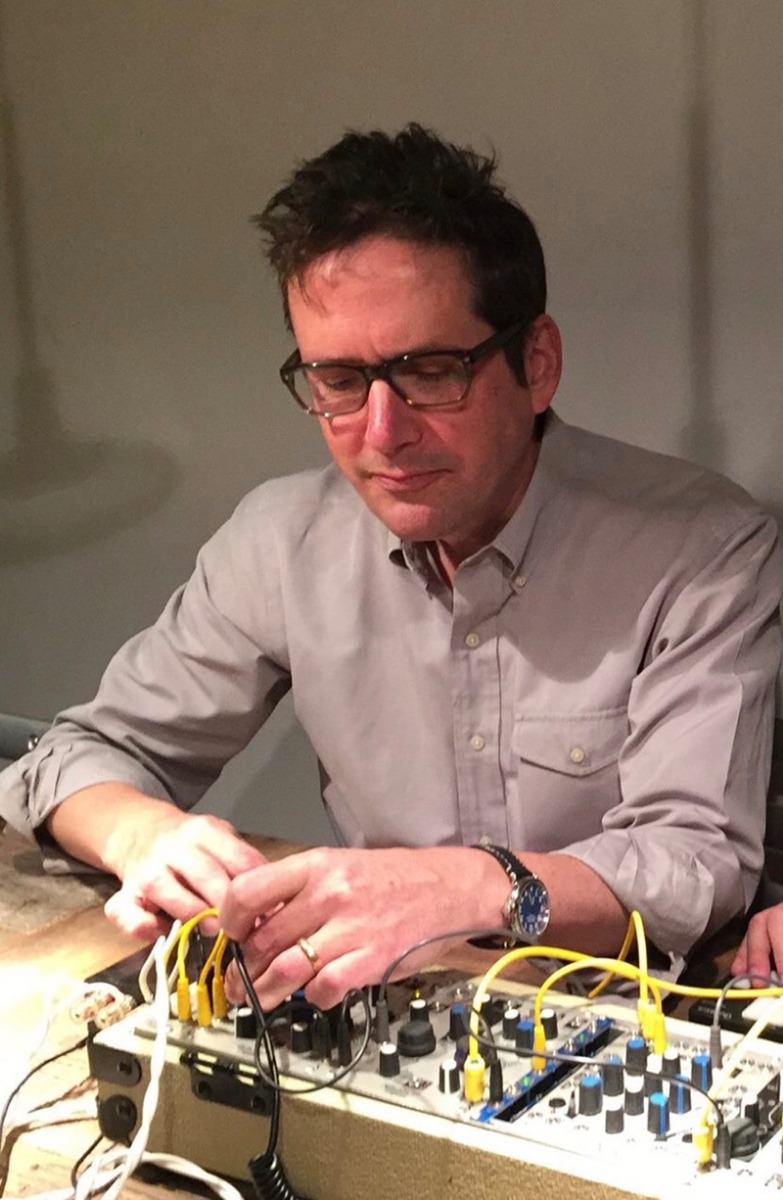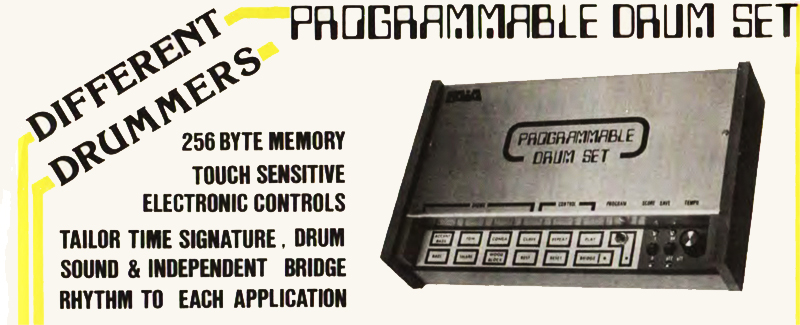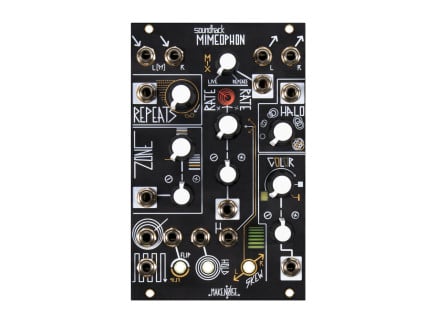Looking back at our recent articles about the QPAS and X-PAN, it should be fairly obvious that I tend to get enthusiastic about new Make Noise instruments. And I'm not alone—a wave of strong enthusiastic responses always seems to accompany their new module announcements, and for good reason: they consistently make uncommonly well-considered, unique, and thought-provoking devices.
There is a special place in my heart for the collaborative work by Make Noise and SoundHack's Tom Erbe. It is awesome to see concepts and techniques from the obscure corners of electronic music history and the computer music sphere gradually find their way into the Eurorack universe; many such devices bring as-of-yet unrealized or under-explored possibilities into the hardware realm for the first time, allowing musicians to explore concepts that previously were out of reach. And Make Noise and SoundHack do so with an invariably unique spin, using their own creativity to offer a fresh perspective on how even familiar techniques can be turned into something entirely new.
 SoundHack's Tom Erbe
SoundHack's Tom Erbe
Because of this, I believe it is fair to say that Tom Erbe and Make Noise's work is pioneering. While Morphagene may not be the first granular synthesis hardware and Erbe-Verb might not be the first hardware reverb, these devices do bring with them approaches to their respective techniques that previously were only available if you were to build your own software solution from scratch—which, of course, even the most profoundly gifted musicians are not always able to do. This hints toward something truly benevolent and good at the heart of the Make Noise/SoundHack relationship: it is a partnership between deeply creative, thoughtful designers who want to share with the world their unique perspectives and curiosity about sound.
SoundHack and Make Noise's most recent collaboration is the Mimeophon: a Stereo Multizone Color Audio Repeater which provides easy access to all of the magical possibilities of delay lines. It can produce echoes, reverbs, cascading loops, bizarre synth tones, lush chorus, metallic flange, total protonic reversal, and chattery granulations. Tom Erbe graciously offered to answer some of our questions about the Mimeophon and instrument design in general, providing a number of insights into his own background and inspirations.
Background and Make Noise Collaboration
Perfect Circuit: Hey Tom! I’m sure most of our readers are familiar with your work in one form or another, but can you please briefly talk about your background? And as an extension of that question—what is SoundHack, and how has it changed over time?
Tom Erbe: I’ve been active in electronic and computer music since the early 80s. I got my real start in the mid 80s as a research assistant in the Computer Audio Research Lab in San Diego, building and programming real-time electronic music performance equipment. After that I became the Studio Director of the Center for Contemporary Music at Mills College. I was able to work with and learn from some of the great pioneers of electronic music like David Rosenboom, Alvin Curran, Larry Polansky, Jim Tenney, Maryanne Amacher, and Robert Ashley on various albums, performances and installations.
I started programming SoundHack in 1989 while arranging the electronics for Robert Ashley's album “Improvement". Bob wanted specific aural “scenes” for each section, and I thought convolution would be a great way to create these sounds. Creating a soundfile convolution processor was the initial motivation for SoundHack. Unfortunately SoundHack wasn’t ready in time to use on that album, but I was excited by the project, so SoundHack gained its own momentum. It was the first Macintosh application with convolution, binaural processing and the phase vocoder. In 2000, I started releasing Soundhack plugins, and more recently, the eurorack modules with Make Noise Music.
 PAiA's Programmable Drum Set, c. 1978
PAiA's Programmable Drum Set, c. 1978
PC: Who/what influenced you to start working with music technology?
TE: So many people! I love all kinds of electronic music and music technology, and I am always thrilled by new sounds and ideas. I was a radio DJ in high school and college, and loved to dive deep into various music genres. This is where I got my first exposure to Brian Eno, Parliament, Terry Riley, The Residents and many others. I got my start with music technology fixing radio station equipment, building kits from PAiA (i.e. the amazing Programmable Drum Set) and following magazine articles like Bob Moog’s Theremin design in Radio and Television News.
PC: How did you get involved with Make Noise?
TE: I go to the NAMM show whenever possible. I love talking to all the creative engineers and musicians there—it’s a great place to talk about music tech and new ideas. I was drawn to the modular area when the Eurorack revival started, and had a really nice time talking to Tony Rolando about the Phonogene when it was introduced. Tony asked about my work with Soundhack, and a few months after the show he invited me to design a module. We got excited by the idea of a pitch-shifting delay, and I put together the firmware for the Echophon.
 Mimeophon with siblings Echophon & Erbe-Verb
Mimeophon with siblings Echophon & Erbe-Verb
PC: You've done a lot of work with Make Noise to date—Phonogene firmware, Echophon, Erbe-Verb, Telharmonic, Morphagene, and now Mimeophon. What is the collaborative process between Make Noise and Soundhack usually like?
TE: Tony and I are always talking about things that we’d like to see as modules. Either Tony will ask me to try to do something, or I’ll spend time working on a design. I’ll present a working model, either in hardware or as a Pure Data patch, and if we both like it, I’ll flesh it out. I am always looking for a design with a lot of range, a balance between refined and more aggressive sounds, lots of modulation options, and most of all—musical and fun to play with.
Zones of Influence: Make Noise / SoundHack Mimeophon
PC: We're very excited about Mimeophon's release—it seems like it can create a pretty stunning array of time-based effects. Can you talk about the original concept and design process behind the module?
TE: At first, I wanted to explore clarity and depth in delay effects with this design. In the process I spent some time analyzing and critically listening to some of my favorite delays - Roland Space Echo, Echoplex, Deltalabs Effectron, the Gibson/Telray oil can delay, and several pedals including Moog's and Malekko's. I started to focus on what I felt was the magic in the sound of each of them, and my sound design of the Mimeophon grew out of this. Thus the design parameters moved beyond just clarity and depth.
Additionally, I wanted to make sure the Mimeophon could perform many classic delay effects including chorus, flange, Karplus-Strong, self-oscillation, and reverse echo. I knew each of these effects need certain signal processing features to sound good. For example, chorus sounds much better if the left and right channels are modulated differently, and my addition of SKEW and µRATE controls accomplish this.
PC: Can you talk specifically about the ZONE concept? Also, how does it relate to the Rate control?
 ZONEs from the Mimeophon manual
ZONEs from the Mimeophon manual
TE: The ZONEs range from sub-millisecond to 41 seconds, and allow you to quickly zoom in and out through the entire delay range. In addition the ZONEs are related by powers of 2, so as you switch from one ZONE to another, the new delay time is rhythmically related to the previous one. So if your delay time is 200ms and a quarter note, you can switch zones to 800ms and a whole note repeat without a break in the rhythm. In addition, when you push the Mimeophon into self-oscillation, quickly changing ZONEs can have a dramatic sonic effect.
PC: What are COLOR and HALO? How do they relate to the rest of the controls on the Mimeophon?
TE: COLOR controls a network of morphing filters which give the Mimeophon a wide variety of feedback characteristics. It’s loosely based on the classic delays I analyzed, so in certain ranges the network gets a deeper slope, in other ranges it becomes more resonant. HALO is a diffusion matrix which is inserted into the feedback path, it gives the character of a reverb embedded in the delay.
Approach & Inspiration
PC: From your perspective, is there a difference in the process of designing audio tools for software versus hardware platforms? If so, how do your approaches differ in each context?
TE: Yeah - definitely! The main difference is that with hardware you have a physical connection to the sound. You need to feel the aural change as the control turns. I always spend a lot of time tuning the physical response - it’s what makes hardware fun to perform with.
On the other hand, software design for plugins is aimed less toward performance, and more toward repeatability and automation. An organic feel may not be appreciated. Also, as users can only move one control at a time, they may not find the interesting sounds as easily, so it helps to guide users with presets.
In hardware, I know the musicians are going to find everything just from exploration - and they always find more sounds than I thought were possible with my design!
PC: What historical piece of musical equipment has left the strongest impression on you?
 The Buchla Touché, from Touché product brochure c. 1978
The Buchla Touché, from Touché product brochure c. 1978
TE: The reel-to-reel tape recorder. Pieces like Cage’s "Williams Mix", Stockhausen’s “Kontakte", Lucier’s "I am sitting in a room", or Fripp and Eno’s "Evening Star” wouldn’t exist without it. There's so much you can do with a recorder and the techniques of splicing, layering, and looping. As far as synths, I’d have to choose a few that I’ve used a lot: the Buchla Touché, Oberheim Expander and Aries 300. All of these are fascinating designs and have a lot of character.
PC: How do you view the rise of popularity of Eurorack? Do you have any personal theory of what caused this spike in interest, and where is the industry and culture around it is going?
 Tom Erbe with his own Eurorack system
Tom Erbe with his own Eurorack system
TE: A few things. First, I see the modular synthesizer as a very personal instrument. You create your own setup, you patch your own instrument, and it evolves as your taste and skill changes. Secondly, musicians currently have a desire to use sounds that are far beyond the preset. There's so much more sonic exploration in music currently. Finally, Eurorack made modular synthesis more affordable. In the late 60s, a Moog IIIp cost the equivalent of $50,000, which was completely out of reach for most musicians. Eurorack has changed all that.
PC: What do you see as the most groundbreaking recent development in the electronic music instrument industry?
TE: It's not completely recent, but I’d say that the development of DIY maker culture has had an enormous effect on the creation of new electronic music instruments.
PC: Do you have any “impossible” project ideas—instruments that you would like to create, but for one reason or another they are unfeasible?
TE: Yes, I’ve done a lot of spectral processing in my software in the past, and I’d love to re-develop and expand on some of these ideas for hardware. But the main limitation is the speed and current draw of small computer processors. It’s not impossible, but it’s unfeasible. I could use the fastest CPU—but it would be expensive, both in milliamps and dollars!
PC: Where do you draw inspiration from these days? As an extension of that question, do you have any upcoming projects of interest?
TE: There is so much new electronic music to be inspired by. Right now I’m listening to albums by Eartheater, J Lin, Sarah Davachi, Cities Aviv, Bana Haffar, Alvin Lucier, Lucretia Delt, Laurie Spiegel, Fhloston Paradigm.
As far as new projects, I’m finishing a new version of James Tenney’s piece "For Ann (rising)" using only analog equipment. It’ll be played in concert in Stuttgart and Toronto soon. I’ll soon be working on a performance version of Alvin Lucier’s piece “Slices” with cellist Charles Curtis. My software projects include some new convolution plugins that are in the beginning stages, and a revived version of my 1991 app SoundHack. Tony and I have been throwing around some cool hardware ideas for the future - but we've been most recently focused on perfecting the Mimeophon - of course!












